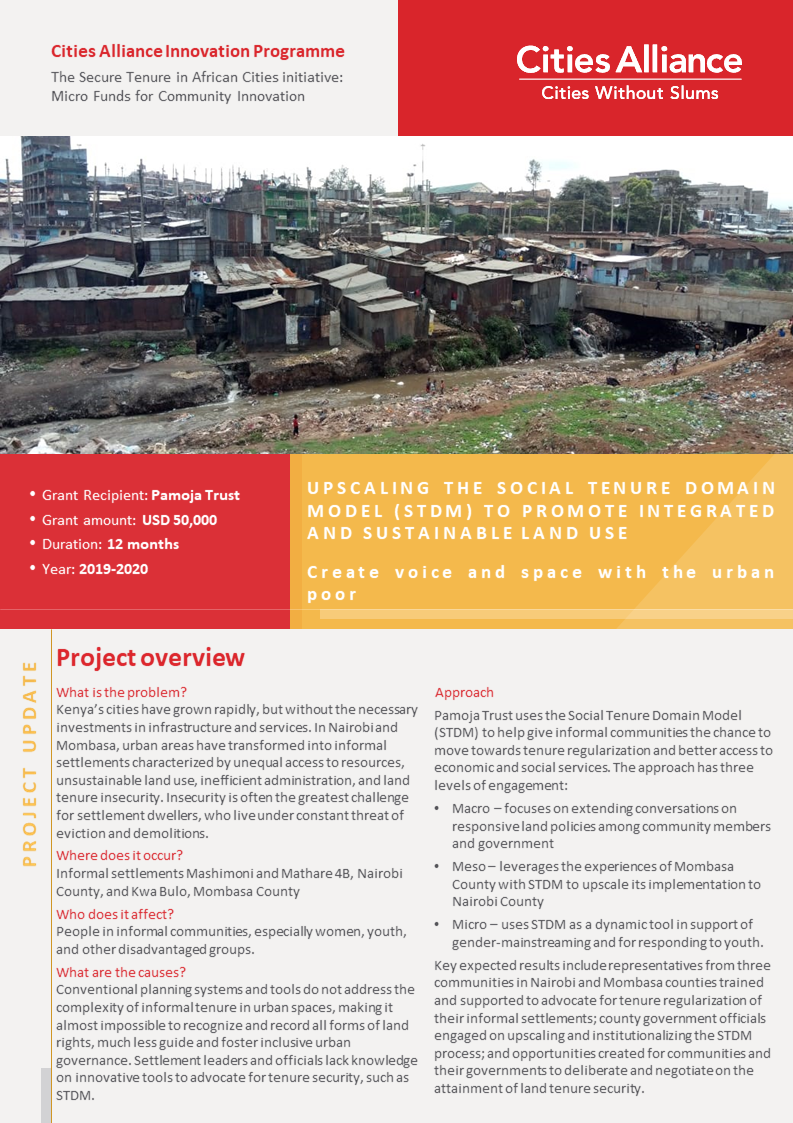The STDM tool is an innovative land information management system developed by UN-Habitat through the Global Land Tool Network (GLTN). It integrates formal, informal and customary land rights into a flexible, user-friendly system that is based on a global standard. Unlike previous enumeration tools that related a person’s name and address to land, STDM can relate personal identifiers, such as fingerprints, to a coordinate point inside a plot of land or dwelling. It can also be used in combination with other enumeration and planning tools. Cities Alliance supported the pilot for the STDM tool in Uganda.
The Nairobi-based NGO Pamoja Trust has been using STDM to better understand land tenure relationships and claims in Kenya. It has found STDM to be very effective in reducing conflicts over land tenure and increasing the capacity of communities to encode land information, which they can use to advocate for their rights.
With funding from the Cities Alliance Innovation Programme, Pamoja Trust is upscaling the Social Tenure Domain Model (STDM) to promote integrated and sustainable land use in informal settlements in Nairobi and Mombasa counties, in Kenya. Key expected results include representatives from three communities in Nairobi and Mombasa counties trained and supported to advocate for tenure regularization of their informal settlements; county government officials engaged on upscaling and institutionalizing the STDM process; and opportunities created for communities and their governments to deliberate and negotiate on the attainment of land tenure security.
Check out this 2-pager highlighting the key lessons learned and achievements so far.






